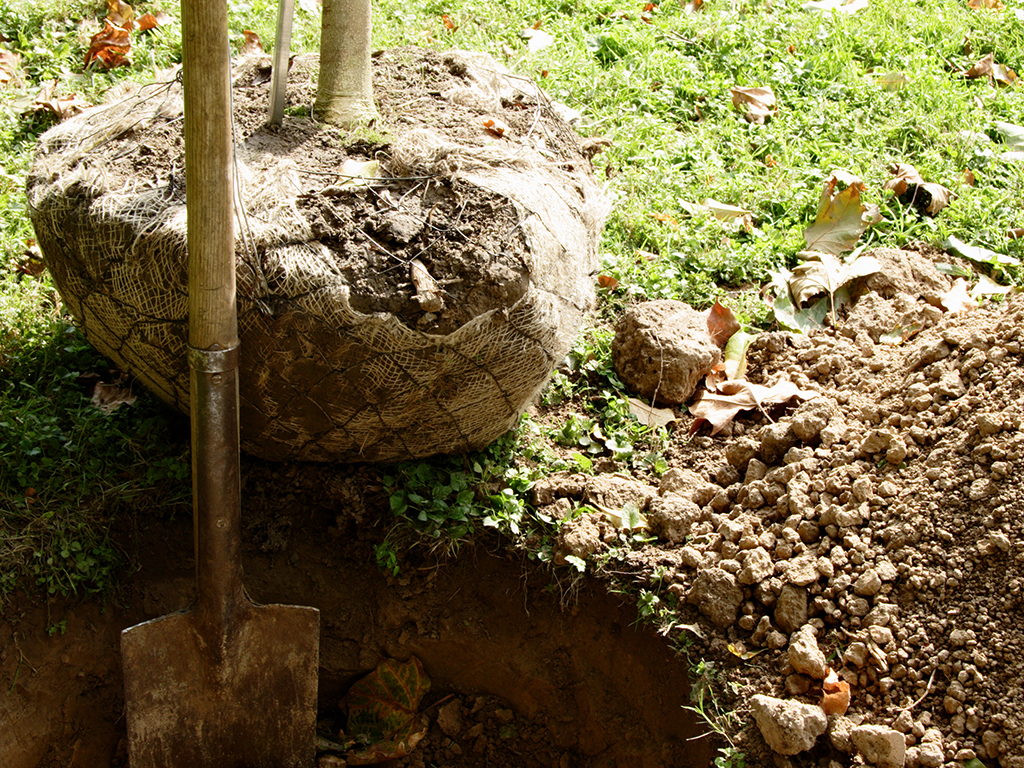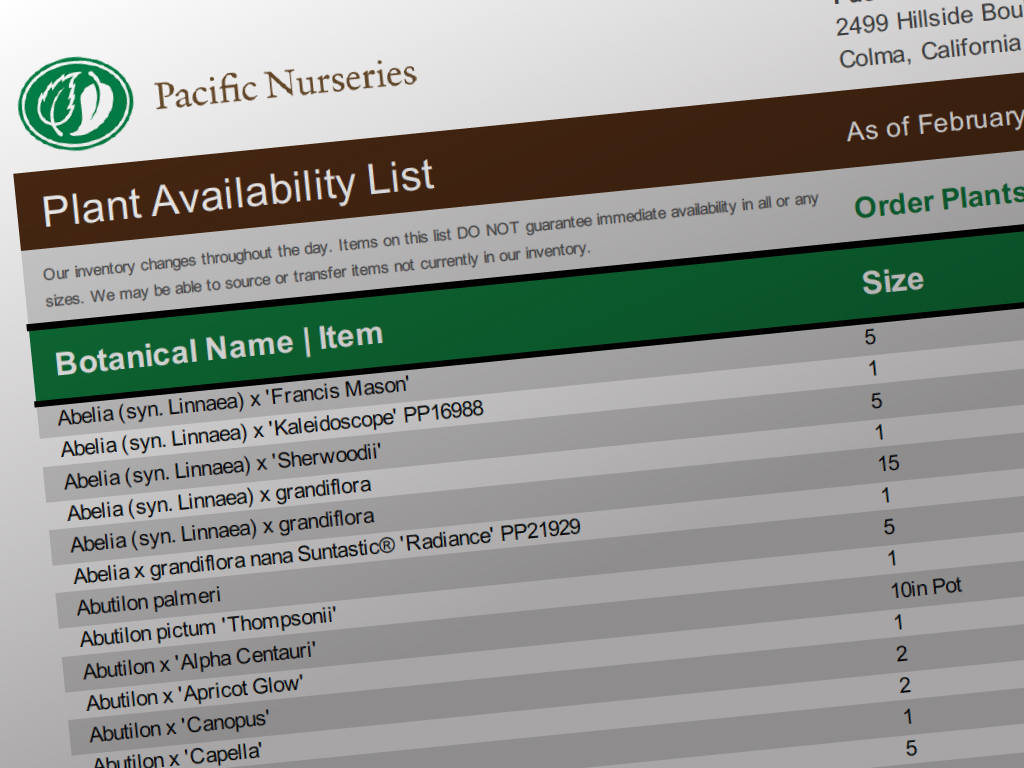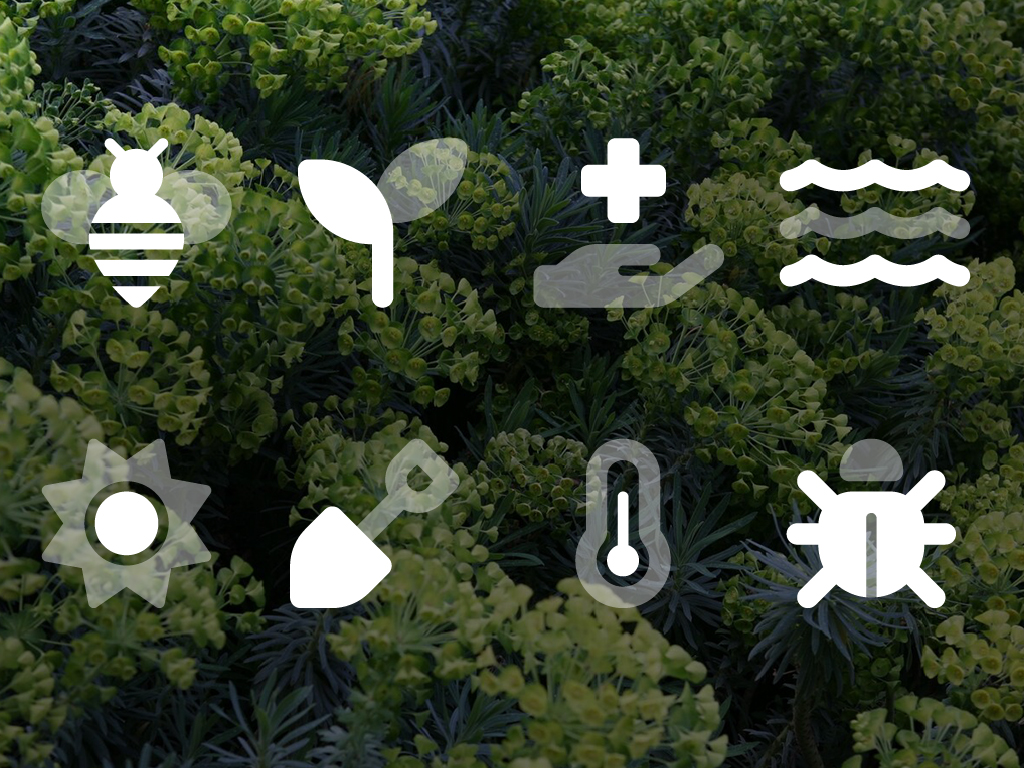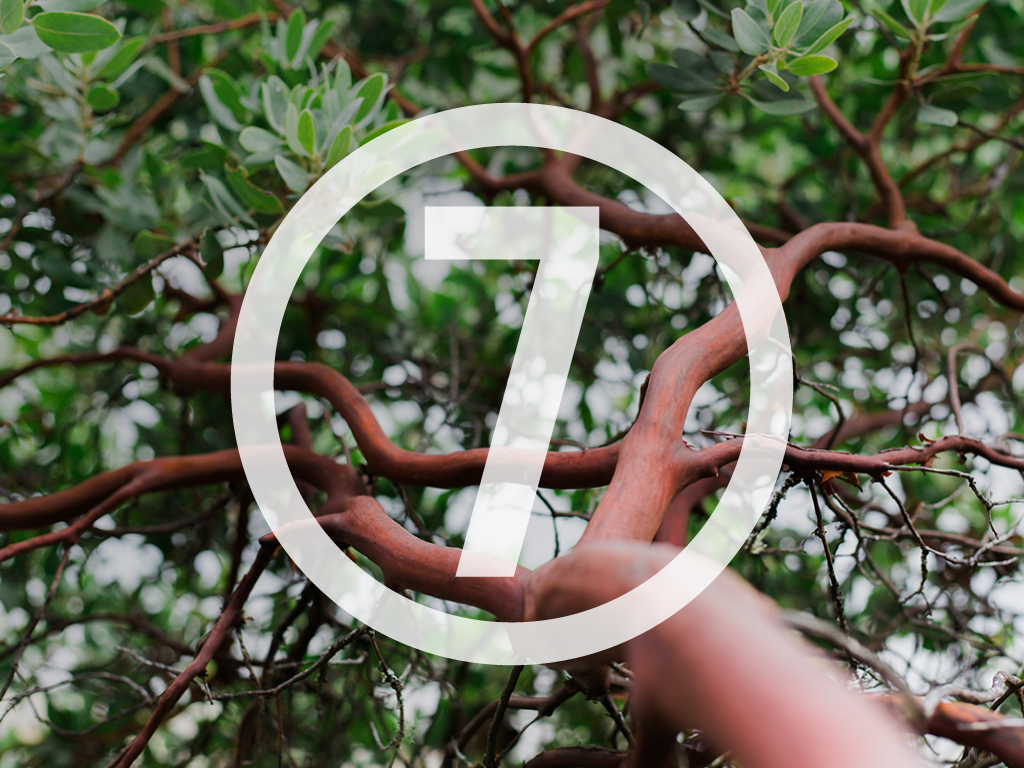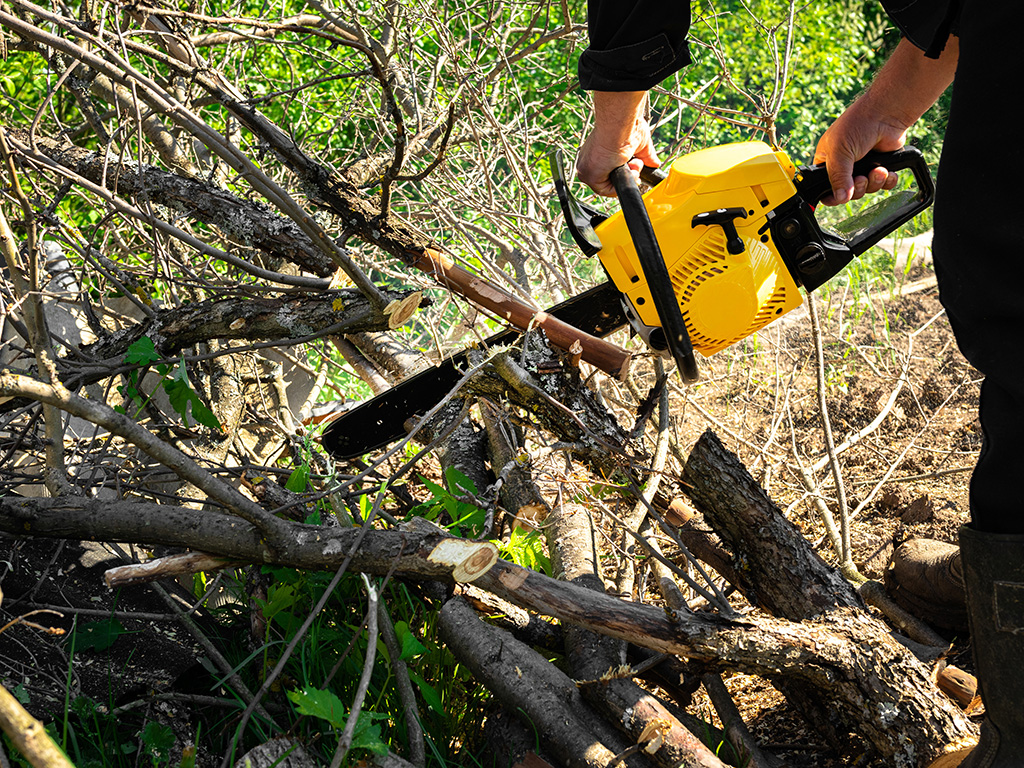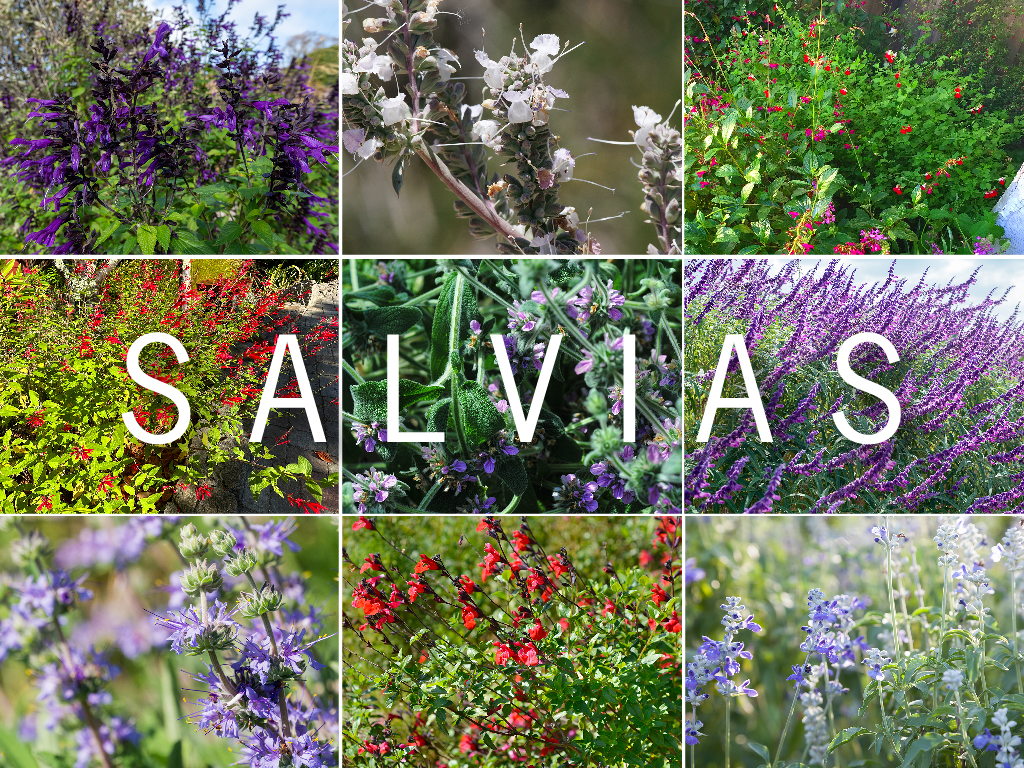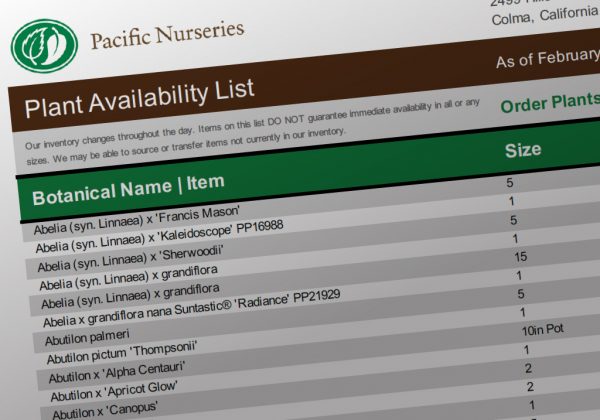Fall planting season is in full swing in the Bay Area. And landscape pros are busy installing and staking trees that will bring spring blooms and lush green growth to their customer’s gardens.
A strategic approach to tree planting
In the Bay Area, September through November is an ideal time for tree planting. That’s because installing trees this time of year encourages roots to become established before a ground freeze or harsh winter weather sets in.Ideally, trees should be planted during the dormant period during or after leaf drop and before early spring when buds break. Weather conditions this time of year are cool and the soil is usually more moist. This allows plants to establish roots in their new location before spring rains and summer heat stimulate new top or crown growth.
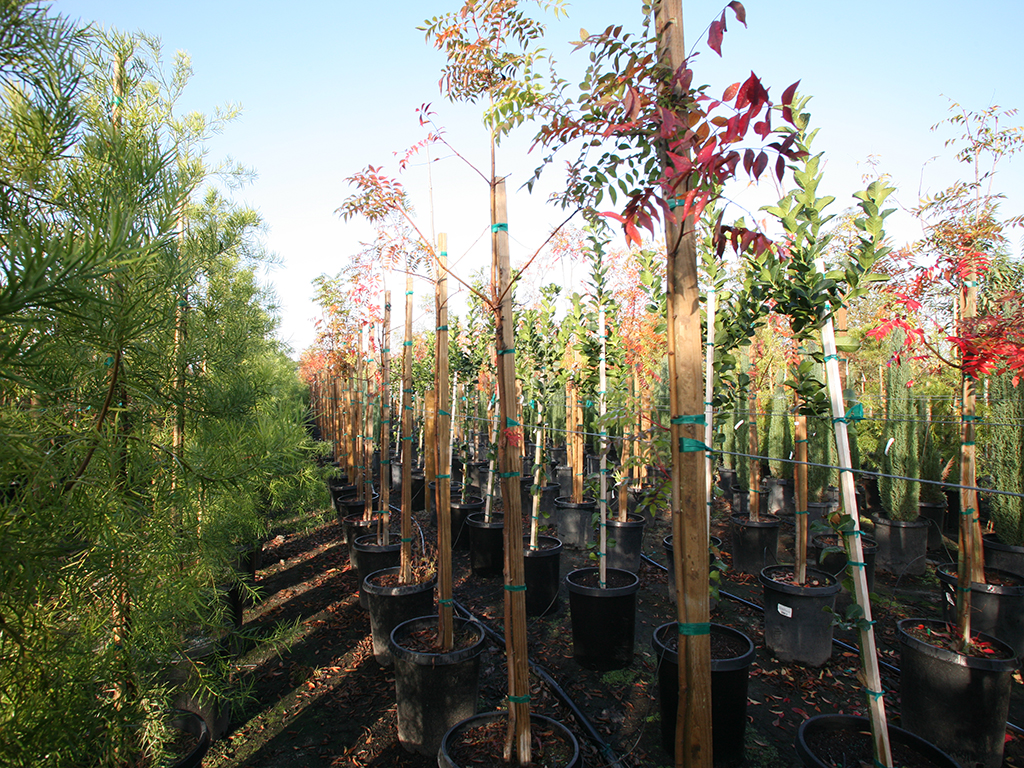
When to stake a tree
A tree grown under natural conditions develops a genetically coded taper or trunk form that serves the tree for a lifetime. This taper is a reduction in trunk diameter from the base to the top of the tree.Many ball + burlap or container-grown trees may not require staking at the time of installation. However, planting bare root or young saplings on a steeply sloped or highly exposed site may require staking to reduce the potential for tree damage or non-vertical trunk growth.
When planting a tree, we recommend removing the temporary stake provided in the plant container by a nursery.
A little support can be beneficial
Staking a freshly planted tree is a reasonable strategy to promote healthy roots and optimal tree health. It’s also a recommended way to protect a young tree from damage during strong wind and challenging winter weather. When additional support is properly applied, it can yield many benefits including:- | Supports trunk sway to enhance the spread of a deep root system + increase trunk taper
- | Provides more energy and available tree resources for taller growth
- | Reduces risk of trunk or limb damage
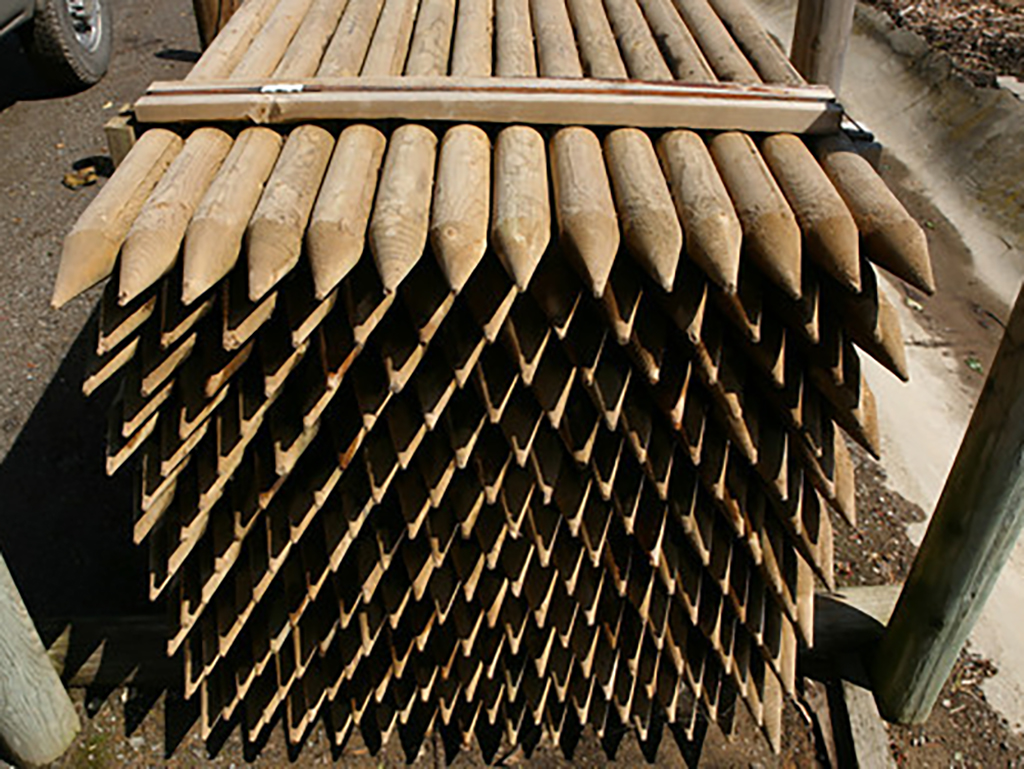
The Urban Forest Ecosystems Institute at Cal Poly, San Luis Obispo discloses in their Tree Standards + Specifications that many factors can contribute to an improperly staked tree including:
If you think the tree that you’ll install is a candidate for staking, follow these guidelines to ensure healthy growth and a beautiful long life:
- Outdated staking methods
- Containerized trees planted with temporary nursery stakes in place
- Timely removal of staking material is neglected
- Absence of tree maintenance or long-term arbor care
If you think the tree that you’ll install is a candidate for staking, follow these guidelines to ensure healthy growth and a beautiful long life:
- | Position stakes as low as possible
- | Avoid tying tree higher than 2/3 of height
- | Use ties that are flexible + allow for movement down to the base
- | Encourage tree movement for natural trunk taper development
- | When roots are established with tree anchorage, remove all staking material
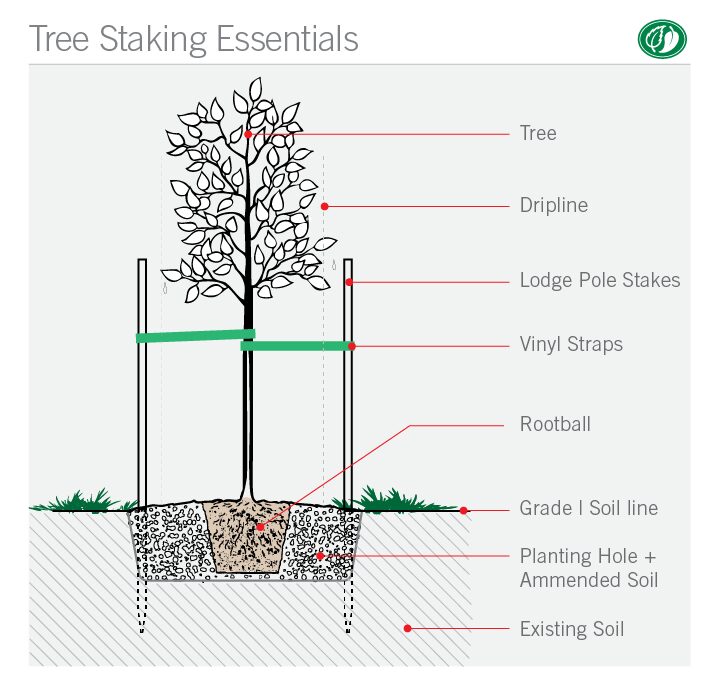
All the support you need
To correctly stake a tree, you need to use the right materials. Consider strong and durable lodge pole stakes that are available in a few diameters with a sharpened endpoint for easy installation. Be sure to also select the right length to provide enough height to sink the stake firmly in the ground to support the tree.We recommend vinyl tree ties because they’re quick and easy to install, adjust and remove. They’re perfect for use on newly planted trees and won’t impede tree growth or cause bark damage.
Just be sure that they’re long enough to provide reach from the stake to the trunk with plenty of room to spare.
Avoid long-term reliance on tree stakes
Trees that are improperly staked may grow taller and more quickly than desired. They may also suffer from a decreased trunk diameter. This loss of critical, natural support can result in tree weakness that reduces necessary strength during stressful weather conditions.A tree grown in a restricted or staked condition for an extended time period can cause a lifetime of damage including:
- | Uneven or reduced root system
- | Inadequate foundation for nutrient absorption or structural support
- | Increased exposure to damage during strong winds or storms
If you choose to stake a newly planted tree, it’s a best practice to remove the support in a few months or at the end of a growing season when substantial root anchoring has been achieved.
Great tree options to consider
Want to know what trees and plants are available right now for your project? Our Plant Availability List is updated weekly and includes all of the plants and sizes that you can pick up or schedule to have delivered to your job site.Over 155 years of tree expertise at your service
As both a grower and a plant broker, we’re ready to work with you to provide just the right ground covers, grasses, shrubs, CA natives and trees that will make your project a success.We can also provide an Estimate for one item to an entire installation just by attaching your plant list to our convenient online estimate form.
Contact any of our experts online at Pacific Nurseries or just call 650.755.2330.
As the Founder of Pacific Nurseries, Don Baldocchi gets satisfaction from knowing the Bay Area is greener and more beautiful by helping landscape professionals succeed. Email Don or give him a call at 650.755.2330.

